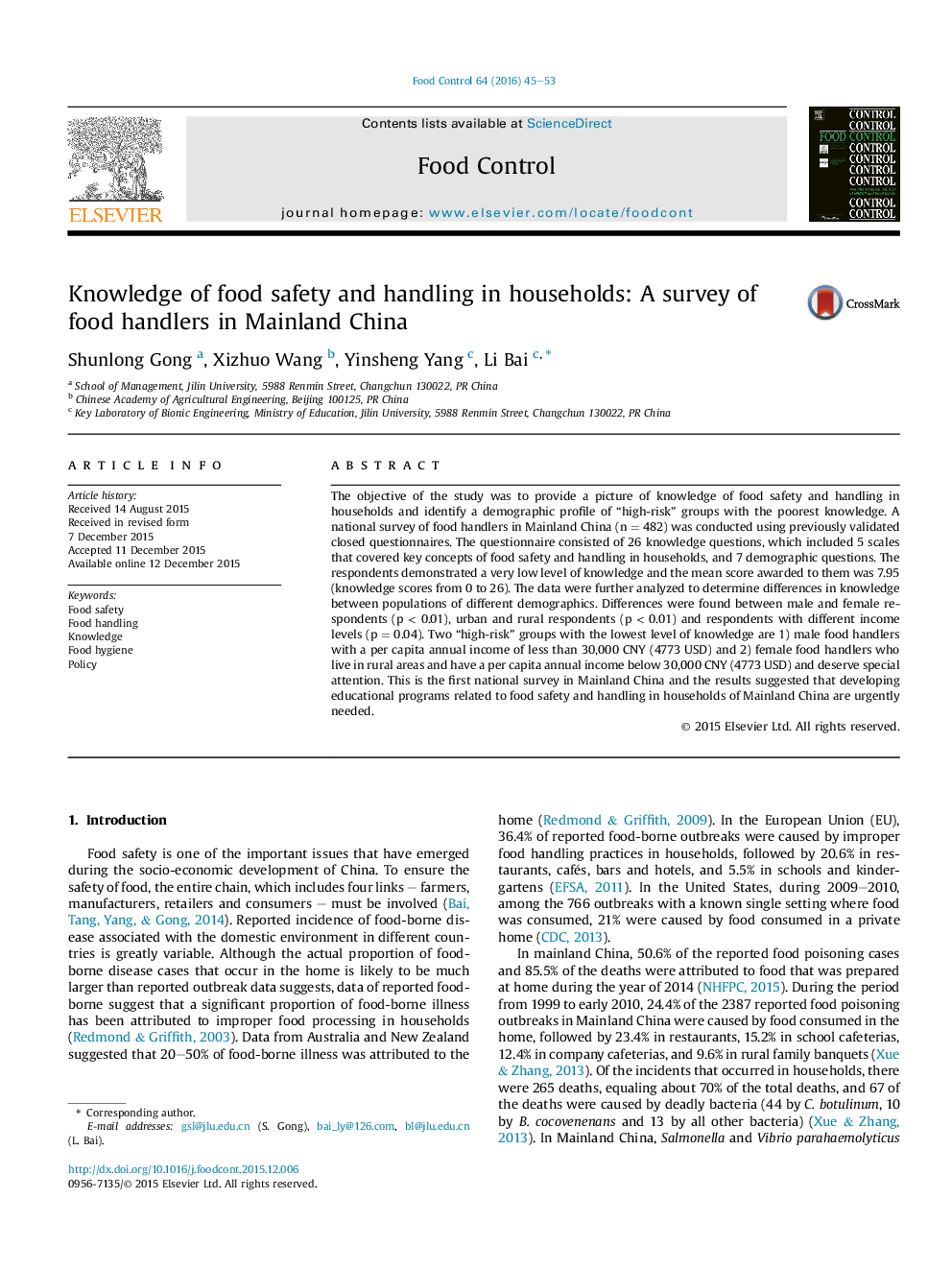| Article ID | Journal | Published Year | Pages | File Type |
|---|---|---|---|---|
| 6390156 | Food Control | 2016 | 9 Pages |
â¢We conducted the first national survey among food handlers in Chinese households.â¢Food handlers demonstrated very poor knowledge of food safety and handling.â¢Knowledge of food poisoning and personal hygiene were the most ignored.â¢Gender, place of residence and annual income had an influence on knowledge.â¢Two groups with the lowest knowledge level were identified as “high-risk” groups.
The objective of the study was to provide a picture of knowledge of food safety and handling in households and identify a demographic profile of “high-risk” groups with the poorest knowledge. A national survey of food handlers in Mainland China (n = 482) was conducted using previously validated closed questionnaires. The questionnaire consisted of 26 knowledge questions, which included 5 scales that covered key concepts of food safety and handling in households, and 7 demographic questions. The respondents demonstrated a very low level of knowledge and the mean score awarded to them was 7.95 (knowledge scores from 0 to 26). The data were further analyzed to determine differences in knowledge between populations of different demographics. Differences were found between male and female respondents (p < 0.01), urban and rural respondents (p < 0.01) and respondents with different income levels (p = 0.04). Two “high-risk” groups with the lowest level of knowledge are 1) male food handlers with a per capita annual income of less than 30,000 CNY (4773 USD) and 2) female food handlers who live in rural areas and have a per capita annual income below 30,000 CNY (4773 USD) and deserve special attention. This is the first national survey in Mainland China and the results suggested that developing educational programs related to food safety and handling in households of Mainland China are urgently needed.
